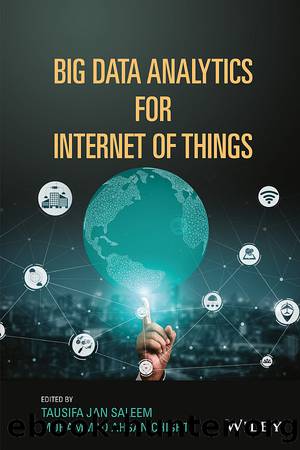Big Data Analytics for Internet of Things by unknow

Author:unknow
Language: eng
Format: epub
Publisher: John Wiley & Sons, Incorporated
Published: 2021-03-28T00:00:00+00:00
6.5 User Sensitized IoT Architecture
The use cases discussed in Section 6.3 establish that personalization derives the cutâthroat competition to build a personal connection with the endâuser, comforting him and giving him a pleasurable experience, thus ensuring his engagement and making him come back for more. The organizations gain by being able to charm and hence retain the existing customers, design personalized campaigns to target a selected consumer base thereby increasing profits, customer base, and brand value. Thus, personalization is not just a necessity for the IoT systems today but is also a powerful instrument that has the potential of shaping the quality of future IoT products and services to keep pace with constantly evolving customer needs.
The above adjudication prompts us to reflect upon an important revelation that many connected services that facilitate connected experiences fall short merely because they do not provide a real connection to the user and hence stop short of scoring relevant value for the endâuser. This brings us to the verge of asking an important question, that if the things that connect us are not inherently personalized, then are they really good enough for the user?
As evident from the discussion in the previous section, most of the IoT services are reaping huge benefits by employing personalization. But still, personalization finds no mention in the IoT architecture. This work wishes to canvass for recognition of personalization as a basic building block of IoT systems. To show the feasibility of realizing such a vision, a userâcentric IoT architecture is proposed in the following text.
The idea behind a userâcentric IoT architecture is not to propose a static architecture but to propose a generic template with no expectation of a hardâcoded definition of the constituent layers and their functionality. The changing needs of users and the environment, where IoT products and services are deployed, dictate that the definition and the layers of the IoT architecture evolve constantly to support functionality, scalability, and availability. Also, the IoT architecture underlying a particular service must be sustainable and maintainable. Without addressing these concerns, the resultant architecture would be a failure. Therefore, the userâcentric IoT architecture largely employs the layers of any basic conventional IoT architecture, tweaks the composition of these layers wherever required, and proposes the insertion of a new layer â the personalization layer that dovetails into the existing layers.
The userâcentric IoT architecture (as shown in Figure 6.3) is composed of the following four layers: the perception layer, the personalization layer, the tweaked data layer, and the platform layer. The perception layer, also known as the IoT device layer or the IoT layer, is the clientâside layer. This layer's main responsibility is to collect useful information and data from the environment. This comprises heterogeneous devices, sensors, and realâworld objects that are embedded in IoT products. It thus supports the products and services being used by the endâuser. The platform layer is the bottomâmost layer. It is fundamental for supporting the Internet and other infrastructural requirements. The data layer resides on the serverâside
Download
This site does not store any files on its server. We only index and link to content provided by other sites. Please contact the content providers to delete copyright contents if any and email us, we'll remove relevant links or contents immediately.
Hit Refresh by Satya Nadella(9040)
The Compound Effect by Darren Hardy(8814)
Change Your Questions, Change Your Life by Marilee Adams(7637)
Nudge - Improving Decisions about Health, Wealth, and Happiness by Thaler Sunstein(7622)
The Black Swan by Nassim Nicholas Taleb(7016)
Deep Work by Cal Newport(6885)
Daring Greatly by Brene Brown(6449)
Rich Dad Poor Dad by Robert T. Kiyosaki(6413)
Principles: Life and Work by Ray Dalio(6220)
Playing to Win_ How Strategy Really Works by A.G. Lafley & Roger L. Martin(5931)
Man-made Catastrophes and Risk Information Concealment by Dmitry Chernov & Didier Sornette(5924)
Digital Minimalism by Cal Newport;(5667)
Big Magic: Creative Living Beyond Fear by Elizabeth Gilbert(5615)
The Myth of the Strong Leader by Archie Brown(5427)
The Slight Edge by Jeff Olson(5352)
Discipline Equals Freedom by Jocko Willink(5286)
The Motivation Myth by Jeff Haden(5157)
Stone's Rules by Roger Stone(5027)
The Laws of Human Nature by Robert Greene(5001)
